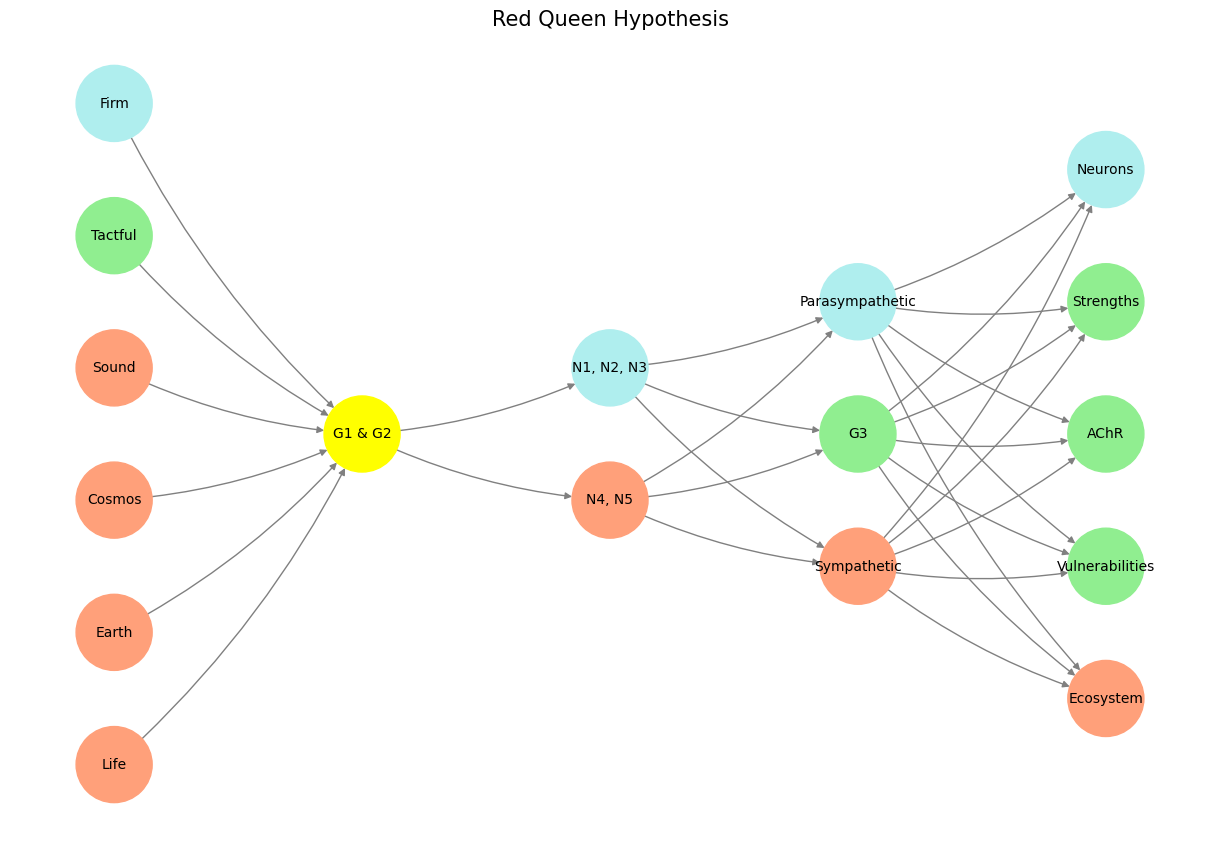Cunning Strategy#
Chapter: Navigating Online Training Through the Neural Network Framework#
Online training is an unavoidable aspect of modern professional life. From compliance modules in academic medicine to industry-specific certifications, the requirement to keep abreast of regulations, safety measures, and ethical guidelines pervades all sectors. Using the neural network framework as a lens, we can dissect the challenges, opportunities, and adaptive strategies embedded within this often-maligned yet essential component of professional growth.
Contextualizing Online Training: A Neural Approach#
The layers of the neural network—Pre-Input, Yellowstone, Input, Hidden, and Output—offer a compelling analogy for understanding the complex dynamics of online training systems. These layers mirror the interplay between natural heritage (Cosmos, Earth, Life) and social heritage (Soundness, Tactfulness, Firmness) within institutional settings.
Pre-Input Layer: Natural vs. Social Heritage Foundations
Life: Online training is a dance in chains—constrained by institutional mandates yet teeming with potential for professional freedom. The rhythm of compliance modules is a reflection of organizational life’s intricate dance.
Earth: These modules often demand “freedom in fetters,” where the freedom to operate within a well-tempered framework ensures safety and harmony within the workplace.
Cosmos: The indifference of the universe to individual compliance reminds us that these efforts are benchmarks—critical yet ultimately transient markers in the grander scheme.
Sound, Tactful, Firm: Anchoring training in well-trodden journeys, tactful criticality, and firm institutional aspirations ensures enduring relevance.
Yellowstone Layer: Adaptive Evolution This layer—symbolized by nodes G1 and G2—represents the adaptive mechanisms that bridge raw inputs (heritage) with operational workflows. Online training evolves as a survival strategy in professional ecosystems, where benchmarks of compliance and innovation continually shift.
The Challenges of Online Training#
Monotony vs. Necessity Compliance training, such as Institutional Review Board (IRB) certifications in academic medicine, often feels disconnected from day-to-day work. The challenge lies in aligning these modules with the intuitive flow of professional life. The mismatch stems from an overemphasis on static benchmarks (“Cosmos” nodes) at the expense of dynamic, engaging content.
Neglected Nodes in Institutional Networks Many organizations fail to tactfully address neglected nodes, such as the broader implications of compliance or its integration with personal growth. This neglect mirrors the “School of Resentment,” where gaps in critical training nodes foster apathy and resentment.
The Opportunities Within#
Iterative Improvement (Input and Hidden Layers) Online training can leverage feedback loops to adapt and evolve. Just as the neural network’s “Input” feeds into “Hidden” layers, well-designed training incorporates:
Sympathetic pathways: Engaging and relatable content.
Parasympathetic pathways: Time for reflection and integration.
G3 nodes: Dynamic adjustments based on user feedback.
Redefining Outputs The “Output” layer—Ecosystem, Vulnerabilities, AChR (Actionable Choices for Human Resources), Strengths, and Neurons—represents the transformative potential of online training:
Ecosystem: Fostering a workplace culture that values compliance as part of a broader mission.
Vulnerabilities: Identifying gaps in knowledge and addressing them tactfully.
Strengths: Empowering employees with skills that resonate beyond regulatory requirements.
Neurons: Creating connections that enhance institutional resilience and adaptability.
A Vision for Transformative Online Training#
To transcend the tokenized simplicity of current systems, online training must align with the architecture of life itself. By embedding Apollonian aspirations (firm institutional ends), Athenian tactfulness (critical history), and Dionysian dynamism (freedom within constraints), organizations can:
Embrace Monumentality: Craft modules that inspire, much like Amadeus’s symphonies.
Foster Criticality: Allow for reflection, akin to Ludwig’s iterative innovations.
Ground in Antiquarian Reverence: Honor established practices with the clarity and universality of great Bach clan.
Tip
The Bach family already had several composers when Johann Sebastian was born as the last child of a city musician, Johann Ambrosius, in Eisenach. After being orphaned at the age of 10, he lived for five years with his eldest brother, Johann Christoph, after which he continued his musical education in Lüneburg. In 1703 he returned to Thuringia, working as a musician for Protestant churches in Arnstadt and Mühlhausen, and for longer periods at courts in Weimar, where he expanded his organ repertory, and Köthen, where he was mostly engaged with chamber music. In 1723 he was hired as Thomaskantor (cantor at St Thomas’s) in Leipzig. There he composed music for the principal Lutheran churches of the city and its university’s student ensemble Collegium Musicum. In 1726 he began publishing his keyboard and organ music. In Leipzig, as had happened during some of his earlier positions, he had difficult relations with his employer. This situation was somewhat remedied when his sovereign, Augustus III of Poland, granted him the title of court composer in 1736. In the last decades of his life, Bach reworked and extended many of his earlier compositions. He died of complications after a botched eye surgery in 1750 at the age of 65.
Show code cell source Hide code cell source
import numpy as np
import matplotlib.pyplot as plt
import networkx as nx
# Define the neural network structure
def define_layers():
return {
'Pre-Input': ['Life', 'Earth', 'Cosmos', 'Sound', 'Tactful', 'Firm'],
'Yellowstone': ['G1 & G2'],
'Input': ['N4, N5', 'N1, N2, N3'],
'Hidden': ['Sympathetic', 'G3', 'Parasympathetic'],
'Output': ['Ecosystem', 'Vulnerabilities', 'AChR', 'Strengths', 'Neurons']
}
# Assign colors to nodes
def assign_colors(node, layer):
if node == 'G1 & G2':
return 'yellow'
if layer == 'Pre-Input' and node in ['Tactful']:
return 'lightgreen'
if layer == 'Pre-Input' and node in ['Firm']:
return 'paleturquoise'
elif layer == 'Input' and node == 'N1, N2, N3':
return 'paleturquoise'
elif layer == 'Hidden':
if node == 'Parasympathetic':
return 'paleturquoise'
elif node == 'G3':
return 'lightgreen'
elif node == 'Sympathetic':
return 'lightsalmon'
elif layer == 'Output':
if node == 'Neurons':
return 'paleturquoise'
elif node in ['Strengths', 'AChR', 'Vulnerabilities']:
return 'lightgreen'
elif node == 'Ecosystem':
return 'lightsalmon'
return 'lightsalmon' # Default color
# Calculate positions for nodes
def calculate_positions(layer, center_x, offset):
layer_size = len(layer)
start_y = -(layer_size - 1) / 2 # Center the layer vertically
return [(center_x + offset, start_y + i) for i in range(layer_size)]
# Create and visualize the neural network graph
def visualize_nn():
layers = define_layers()
G = nx.DiGraph()
pos = {}
node_colors = []
center_x = 0 # Align nodes horizontally
# Add nodes and assign positions
for i, (layer_name, nodes) in enumerate(layers.items()):
y_positions = calculate_positions(nodes, center_x, offset=-len(layers) + i + 1)
for node, position in zip(nodes, y_positions):
G.add_node(node, layer=layer_name)
pos[node] = position
node_colors.append(assign_colors(node, layer_name))
# Add edges (without weights)
for layer_pair in [
('Pre-Input', 'Yellowstone'), ('Yellowstone', 'Input'), ('Input', 'Hidden'), ('Hidden', 'Output')
]:
source_layer, target_layer = layer_pair
for source in layers[source_layer]:
for target in layers[target_layer]:
G.add_edge(source, target)
# Draw the graph
plt.figure(figsize=(12, 8))
nx.draw(
G, pos, with_labels=True, node_color=node_colors, edge_color='gray',
node_size=3000, font_size=10, connectionstyle="arc3,rad=0.1"
)
plt.title("Red Queen Hypothesis", fontsize=15)
plt.show()
# Run the visualization
visualize_nn()


Fig. 8 Firmly Committed to Institutions Values & Ideals. Online training need not be a grudging obligation. Through a neural network-inspired redesign, it becomes an adaptive, iterative, and ultimately empowering journey. Institutions can reshape this critical node into a thriving ecosystem, where compliance is not a chain but a dance—an interplay of soundness, tactfulness, and firm commitment to ideals. Amadeus firmly established the goals (Piano Concerto No. 20 in D minor; ends), Ludwig used this as inspiration to critique classicism (Symphony No. 3 in E Major; justified), Bach keeps us grounded and bounded within equal temperament (Well Tempered Clavier; means). To recap, and invert, Bach is sympathetic to the methods of our ancestors of antiquity, Mozart parasympathetic to the ideals of our mythologized heroes, and Ludwig is bequethed a strategic bequest motive and vast combinatorial space wherein he might find the unattended spaces and reappraise the path lest travelled by T.S. Eliott#

